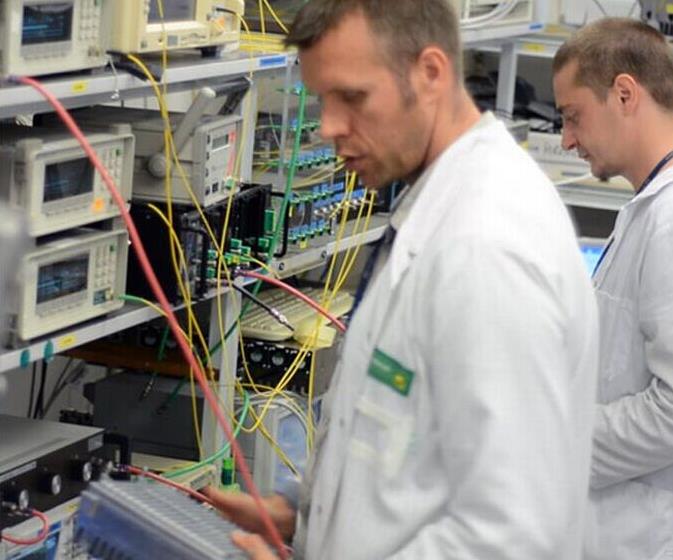
How to test the optical power of optical transceiver?
After a optical module is made into a finished product, it must go through multiple steps of testing before shipment that ensure the quality of the product. In the test, several parameters are very important. Only when these parameters meet the relevant standards, the optical module performance can be optimized. These parameters include: transmitted optical power, receiving sensitivity, bias current, saturated optical power, extinction ratio, and operating temperature.
Today we focus on the transmitted optical power, you may know its definition, but do you know how to test the optical power of optical module? So, please follow the footsteps of ETU-Link, we will give you the answer!

First we need to understand what is the transmitted optical power.
The transmitted optical power refers to the output optical power of the optical source at the transmitting end of the optical module, it taking dBm as the unit. It is an important parameter of the optical module and will directly affect the quality of the network communication.
What are the causes of poor power of optical transceiver?
v Power does not match with resistance
v Defective patch or poor performance of drive chip
v Poor transmitter TOSA or PD+ pin solder joint false
v Magnetic beads on LD+ and LD- signal lines are defective or missing
v The components (capacitance, resistance, inductance or magnetic bead) at the foot of the storage chip are defective or missing
How to test the optical power of optical module?
The general tools have optical power meter and optical fiber attenuator. The test steps are as follows:
v The power meter is used to measure the optical output power of the optical fiber transmitter.Industry standards define the optical input power of specific network standards for transmitters and receivers.The receiver and transmitter shall be matched, and the optical output power of the transmitter shall be within the specified range;
v Connect the transmitter to the receiver, check whether it can work properly under the maximum optical input power provided by the transmitter, and then test the receiver with the minimum optical input power that can be received by the receiver to see whether the receiver can still provide the best performance;
v Calculate the attenuation level required for the test.Calculation method: if the optical output power of the transmitter is -15 dBm, and the minimum optical output power of the receiver is -32 dBm, the difference between the two is 17dB. The 17 dB optical fiber attenuator can be used and the receiver can be retested.

Doing business is not simply to sell products, but to show professional service and product technical knowledge to customers, which some salesmen lack. Just imagine, if you don't know anything about product testing, how can customers trust you with orders?Therefore, to become a master of foreign trade, we also have to learn from the basic knowledge, know everything!
As a manufacturer of optical modules, ETU-Link(etulink.com) can provide you with professional knowledge of optical modules for free!
Categories
New Blog
Tags
© Copyright: 2025 ETU-Link Technology CO ., LTD All Rights Reserved.

IPv6 network supported
Friendly Links:
易天官网